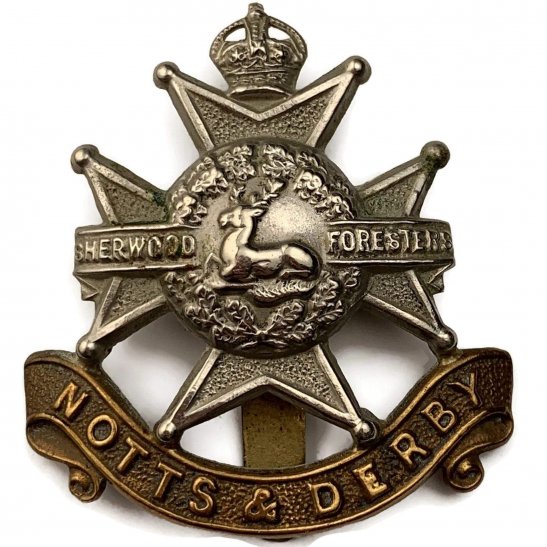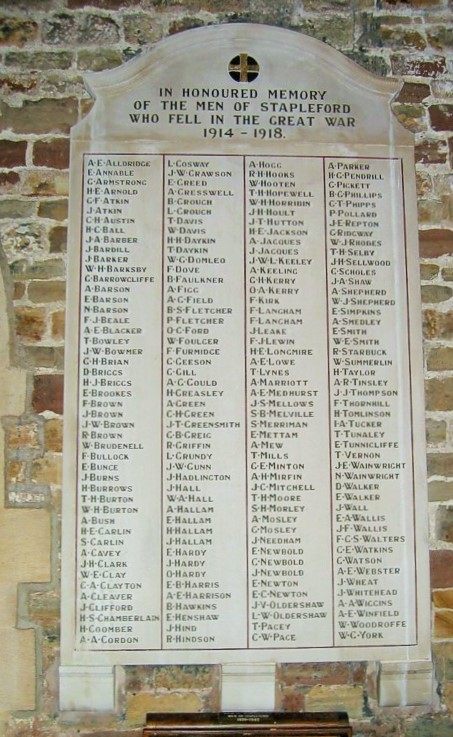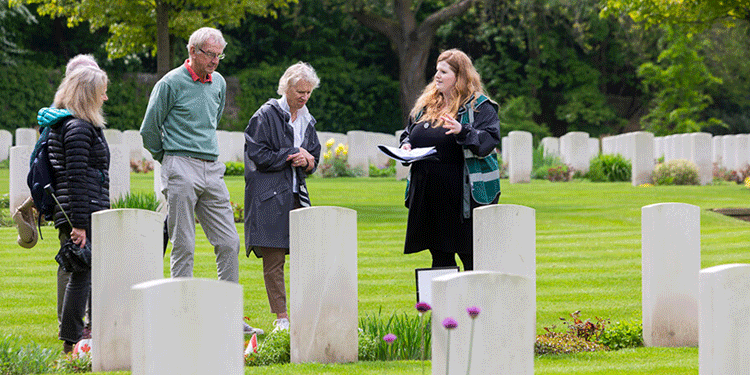
Isaac Arthur Tucker was born in 1896, at Stapleford, in Nottinghamshire, the fourth of six known children to John Hallam Tucker, a labourer at a gas engine works, and Mary Ann Tucker (formerly Beeston). He had three brothers and two sisters: John William (1889); Alice Maria (1891); George (1893); Alfred Henry (1900); and Henrietta (1902).
The family lived at 35 Antill Road, in Stapleford, and by 1911 Isaac Arthur Tucker was employed as a moulder's labourer.

Isaac Arthur Tucker's service record has not survived, and what is known has been extrapolated from other sources.
He enlisted at Derby as a private, no. 14314, in the Sherwood Foresters (Nottinghamshire & Derbyshire Regiment). He served in 'A' Company of the 10th (Service) Battalion.
The 10th (Service) Battalion, Sherwood Foresters, was formed at Derby in September, 1914, as part of the 51st Brigade, in the 17th Division. By October, 1914, it was at Wool, in Dorset, and moved to West Lulworth in the December. It moved to Winchester in June, 1915, for final training, and landed at Boulogne, in France on 14 July, 1915, with Private Tucker one of its number.

The battalion moved to the southern Ypres sector for trench familiarisation and then took over trenches in that area.
In February, 1916, it was in action at The Bluff, south east of Ypres, on the Comines Canal. Following an intense bombardment the Germans attacked and took over the front trenches. A counter-attack was mounted with the support of neighbouring units. The battalion suffered 3 officers killed; 7 wounded; and 6 missing; with 23 other ranks killed; 148 wounded; and 163 missing.
The battalion then moved to Lille and then to the Armentieres sector in France, where it continued to suffer casualties over the following months, made up for with drafts of reinforcements.
Private Tucker was employed as a sniper. He was admitted to the 51st Field Ambulance on 30 May, 1916, suffering from an abscess to his right arm, but was discharged to duty the next day. One wonders whether the abscess on his right arm was caused by his employment as a sniper, and the pressure of repeated recoil whenever he fired his rifle?
On 1 July, 1916, the battalion marched to Morlancourt, and prepared to occupy Becourt.
However, on 2 July it was in support for the move through Fricourt, from which the Germans had retired, and then to Fricourt Wood, where it mounted a bombing attack, and continued to attack and advance on 3 July.
The battalion was relieved on 4 July, having sustained: 3 officers killed; and 2 wounded; with 13 other ranks killed; 103 wounded and 13 missing.
The battalion moved back into the line on 7 July to attack the Quadrangle Support Trench.
The battalion was relieved on 12 July, having suffered a further one officer killed; 8 wounded; and one missing; with 19 other ranks killed; 182 wounded and 41 missing. Between 1-11 July, 1916 the battalion had lost 15 officers and 366 other ranks, roughly 40% of its strength.
The battalion was relieved and moved to Ailly-Le-Haut-Clocher where it was billeted and received reinforcements. On 1 August, 1916, the battalion moved back to the trenches and took over Pommiers Trench.
On 4 August it moved forward and took over Mine Trench, which was really a series of shell holes roughly joined up. Efforts to improve the line was difficult due to heavy shelling.
On 6 August patrols reported that enemy posts were inside the edge of Delville Wood.
On 7 August the battalion was ordered to push forward an outpost line beyond the edge of the wood by night and observation posts by day. Orders were then received to attack the enemy positions in Delville Wood. The attack was launched at 4.30 pm but was held up by machine gun and rapid rifle fire. Orders were received to repeat the attack at midnight, which was again unsuccessful.
On 8 August the neighbouring Border Regiment was to attack again, at 3.30 pm, but was not carried out owing to an artillery barrage not being laid down.
The battalion was relieved on the night of 8/9 August. Casualties for the period 4-9 August, 1916, were: 7 officers wounded; 38 other ranks killed; 5 died of wounds; 148 wounded; and 23 missing.
One of those missing/killed was Private Isaac Arthur Tucker, presumed to have been killed in action at Delville Wood, on the Somme, on 8 August, 1916, aged 20. He was subsequently awarded the Military Medal, which was not gazetted until 21 October, 1916, two months after his death.

Having no known grave Isaac Arthur Tucker is commemorated on the Thiepval Memorial, Somme, France. He is also commemorated on the war memorial in St. Helen's Church, at Stapleford, Nottinghamshire, listed as 'I. A. TUCKER.'.

Isaac Arthur Tucker's service earned him the Military Medal (GV); 1914-15 Star; British War Medal, 1914-20; & Victory Medal, 1914-19.

